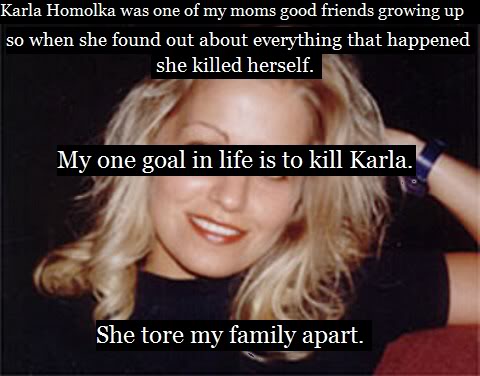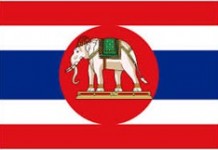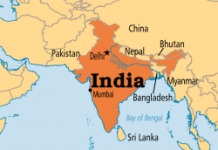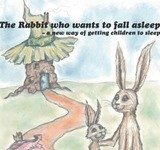“Independent journalist Paula Todd knew it was a gamble when she published Finding Karla: How I tracked Down a Serial Child Killer and Discovered a Mother of Three as a $2.99, 46-page e-book, rather than in hard-cover print or as an article for one of Canada’s leading magazines. But time was against her. “Other reporters were on Homolka’s trail, too, and I had no idea how close they were,” Todd, a former Star reporter, says … “
The article goes on to explain that Paula Todd’s 14,000 word e-book has sold between 65,000 and 70,000 copies, and has generated about $200,000 in revenue! Todd obviously wouldn’t have earned nearly as much if she’d written the story for a traditional print magazine. (“The most Todd might have been paid for a freelance magazine piece,” according to the article, “is $15,000.”)
And, with other reporters angling for the story at the same time, Todd didn’t want to risk waiting the year or more it might have taken to get a print book released via traditional publishing channels. Instead, she she took matters into her own hands and published it herself, and there we have a simple e-book success story. Or do we?
There are a few factors are at work here that make this scenario especially unique.
Firstly, our American and overseas readers might not understand just how notorious a case this was in Canada. Homolka plea bargained testimony to convict her husband, Paul Bernardo, of the heavily publicized murder of two teenage girls. In the course of her evidence, it came out that her involvement had been more extensive than initially believed, and that one of her crimes involved luring her own teenage sister to death at her husband’s hands. The public outcry that Homolka got off with a reduced sentence given her own involvement was extensive, and the mothers of the murdered teenagers were compelling regulars in the media.
This case was probably one of the top ten most infamous murders in Canadian history. I don’t think Todd would have been able to generate such interest in her journalistic pursuit, in e-book form or otherwise, if she wasn’t dealing with such an infamous crime.
As well, the case became known for being an early case study regarding the power of internet—ironic, given that Todd is now making headlines for exploiting another form of new media. When the case was being tried in 1993, the judge imposed a Canada-wide publication ban on details of the evidence and on Homolka’s plea bargain. However, that could not stop overseas journalists from covering the story as they saw fit, and the internet was just becoming popular enough to be on the regular person’s radar.
My older sister, who was living in the United States by then, printed a bunch of stuff she found online and sent it to us. It was the first time I remember the internet playing such a significant role in a news story for me, and I think the publication ban does play a role in the case’s perceived notoriety, not to mention people’s curiosity for information concerning it.
And finally, there’s the content of the book itself. I haven’t read it, but from the summaries I ‘ve seen online—and the complaints people are making in the reviews—there just isn’t much content to speak of. Todd decides to track Homolka down. She succeeds. She has a five-minute conversation with Homolka, wherein she confirms her identity and promises not to publish photographs of Homolka’s children. That’s pretty much it.
Would she have merited a book deal from a major publisher on such slim pickings? Probably not. Would she have gotten a magazine article? Likely, yes, and she would have made less money than she did on the e-book, so there is news in that. But the article asserts that her success is a “game-changing pattern other freelance journalists will be quick to embrace,” and I just don’t see it. I do think someone involved in another case as big as this one—the parents of Casey Anthony, for instance, or the children of Michael Jackson—could learn from this example. But for the average freelance journalist with the average small-to-medium story? I think it’ll be business as usual, and I can’t see Todd’s example being particularly worthy of emulation.



































46 pages isn’t really an eBook. It’s an eArticle or an eShortStory.
But this illustrates the advantage of setting a low price point. If you have a compelling subject you will get a lot of impulse purchases. The trouble is, if you don’t deliver value, people won’t come back for more. She may not be able to pull this trick again.
Value is in the eye of the beholder.
And timeliness is part of the value proposition.
There is, in fact, a lesson here for non-fiction writers: people *will* pay for in-depth reporting if the subject is significant enough and timely enough. And that ebook self-publishing economics work fine for this of pamplet-length reporting.
This isn’t the first example of this kind of digital effort but it certainly is a noteworthy example of where things are headed for freelancers.
There is a regrettable viewpoint pervading this article that is trying to slot this eArticle or eBook, or whatever you want to call it, into a slot; a category, to find a parallel in the old paper publishing world in order to establish legitimacy.
This is a fundamental mistake in my view. The old world is dead. What only thing that matters in the world of ‘e’ is what Felix points out – value. This is the only thing that matters.
It doesn’t matter what length it is, it doesn’t matter if some snooty publisher would have published her in paper form. This is transient and ephemeral stuff that is perfectly suited the ePublishing world.
All that matters is whether what she delivers is interesting, well written and of value to a customer.
I think there is most definitely a market here for journalists who have a reputation for good reporting and good writing, to offer this kind of extended coverage of a story to the public for this kind of value-price-range. Something that goes beyond the limited space offered by news organisations, but doesn’t wait a year before a paper book deal can be negotiated and processed and printed and distributed. I can think of many news stories, technical stories, political stories where I would pop a quick 2 dollars for a piece like this.
Apart from the obvious ethical questions about the writing and publishing of such a book, one can’t help but wonder … is it any good? Very glad to see your article includes mention of the pervading public opinion that it’s underwhelming, if not downright disappointing. This kind of so-called “journalism” is clearly just tabloid-style rubbish presented in a shiny digital wrapper.
And we all know Tabloids don’t sell ……..
I think this article misses the point entirely. If there is a forum, or one evolves, for selling news articles as ereader shorts, the point is scale. It takes very little to make selling a story like this more profitable than selling it to, or having it paid by, traditional print media. Even with more limited interest factors, the comparison to what it would fetch for traditional pay will most likely always be worth the risk.